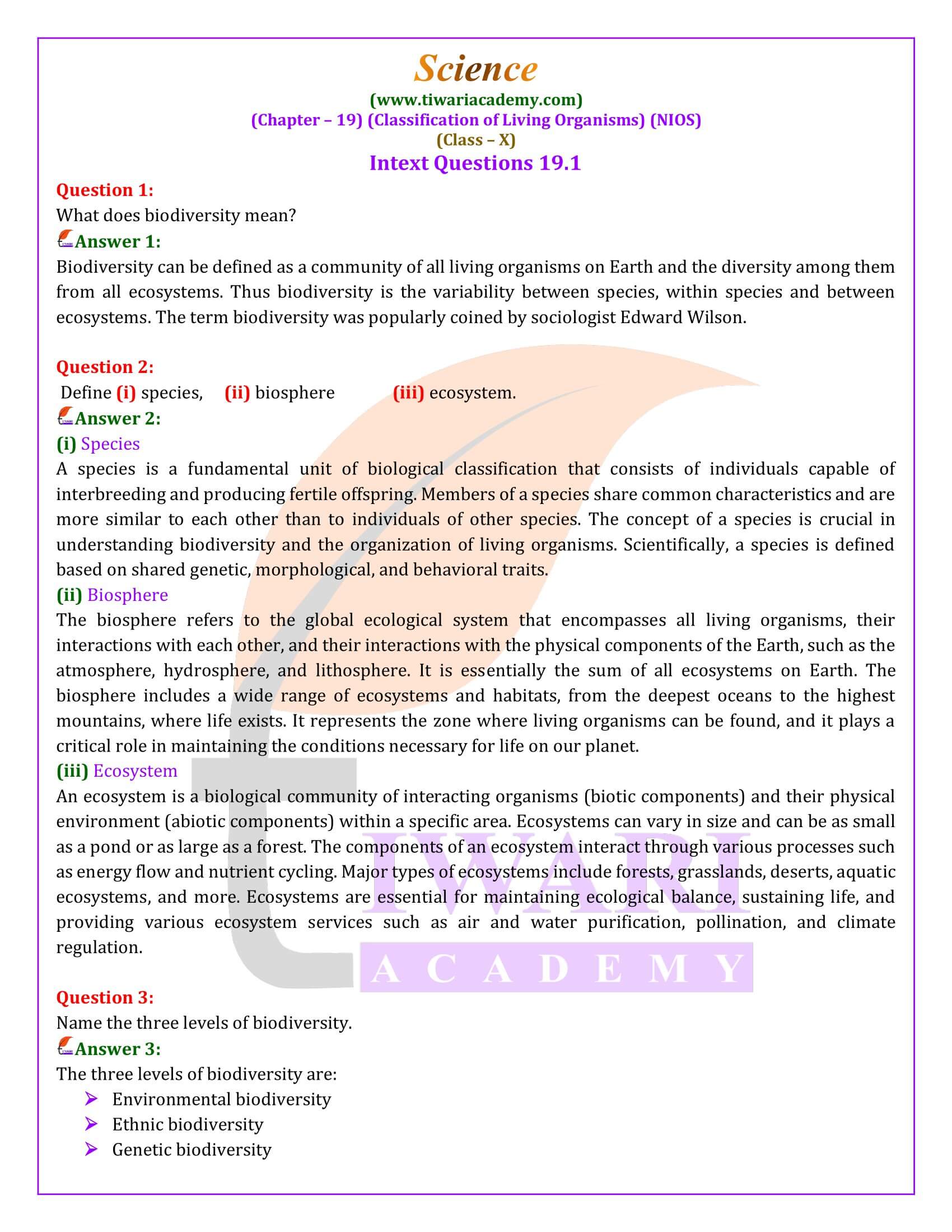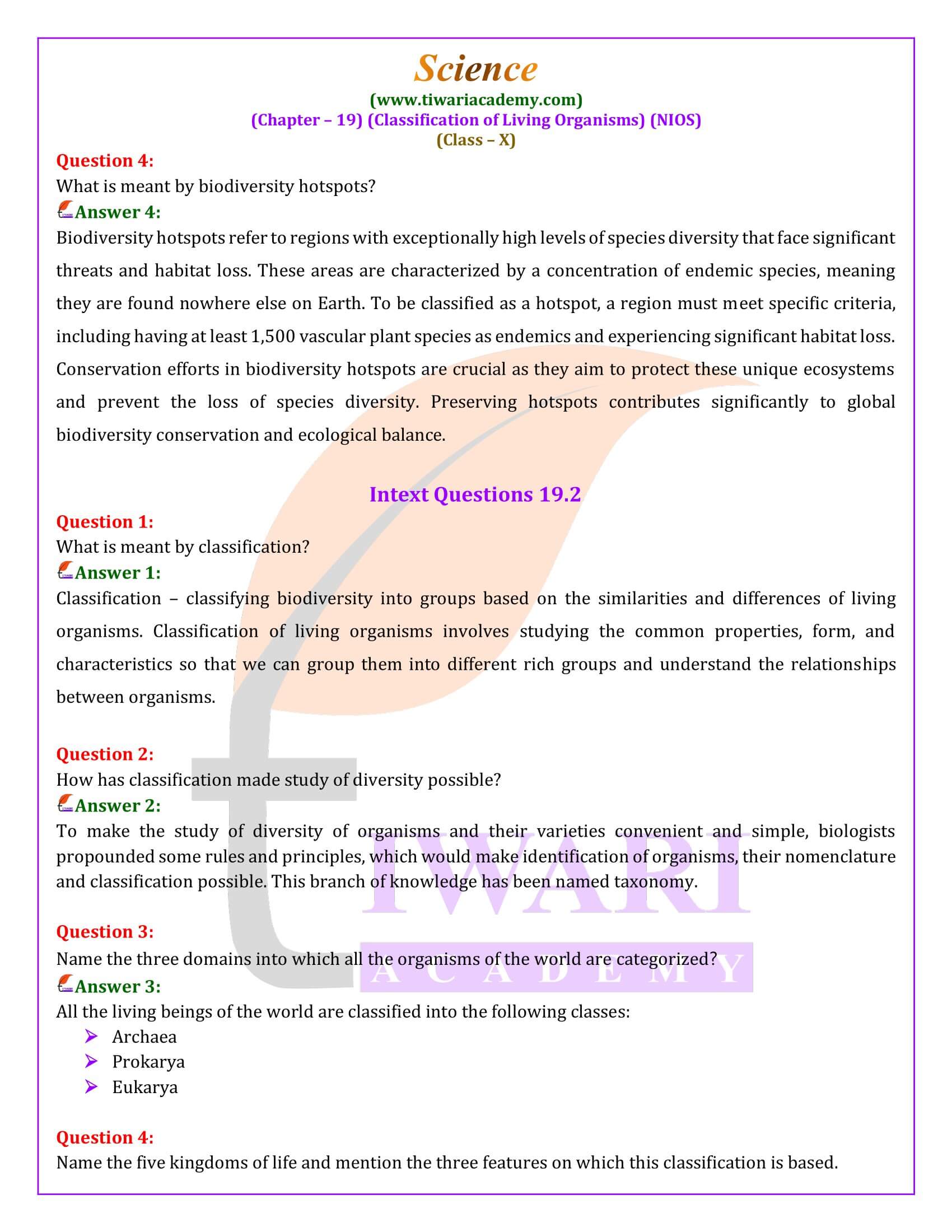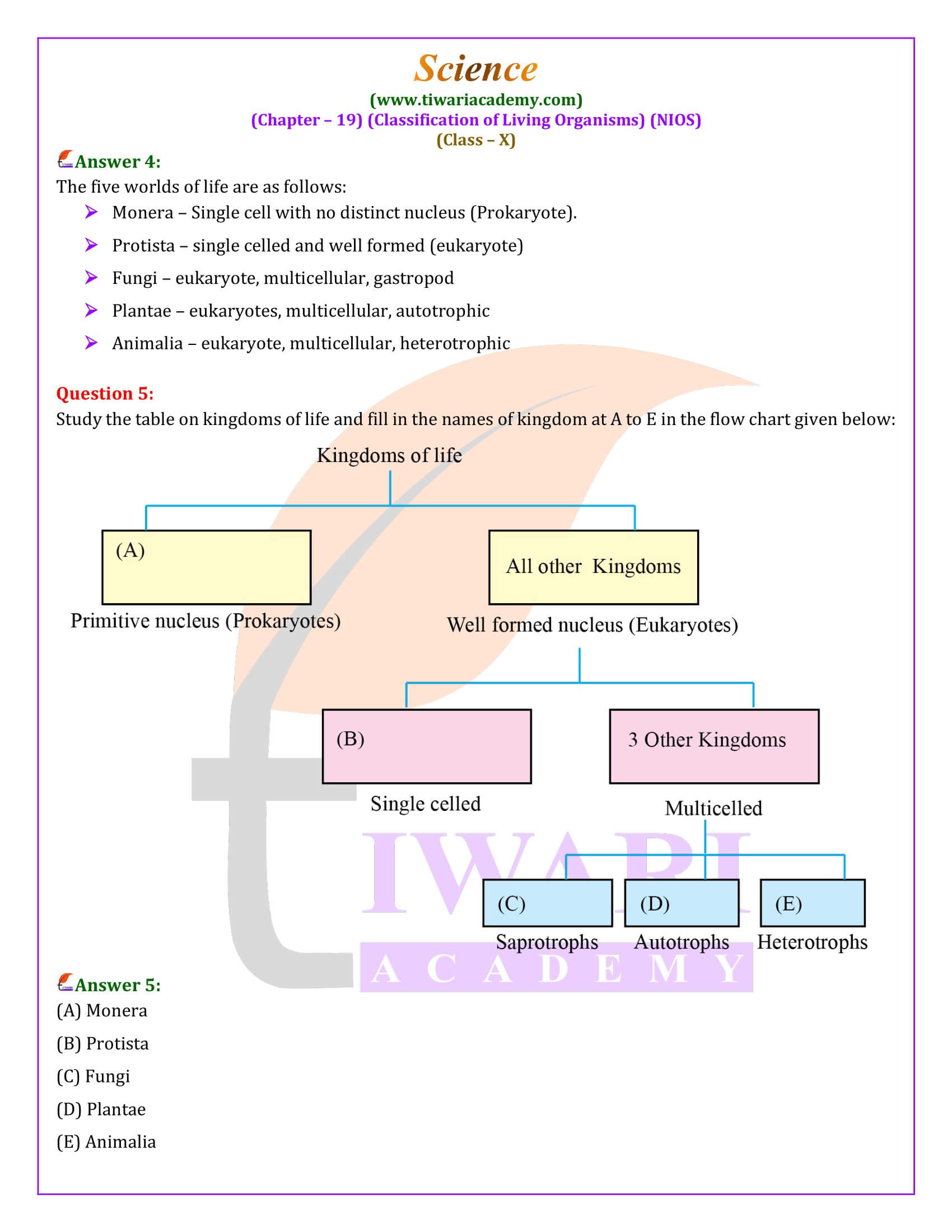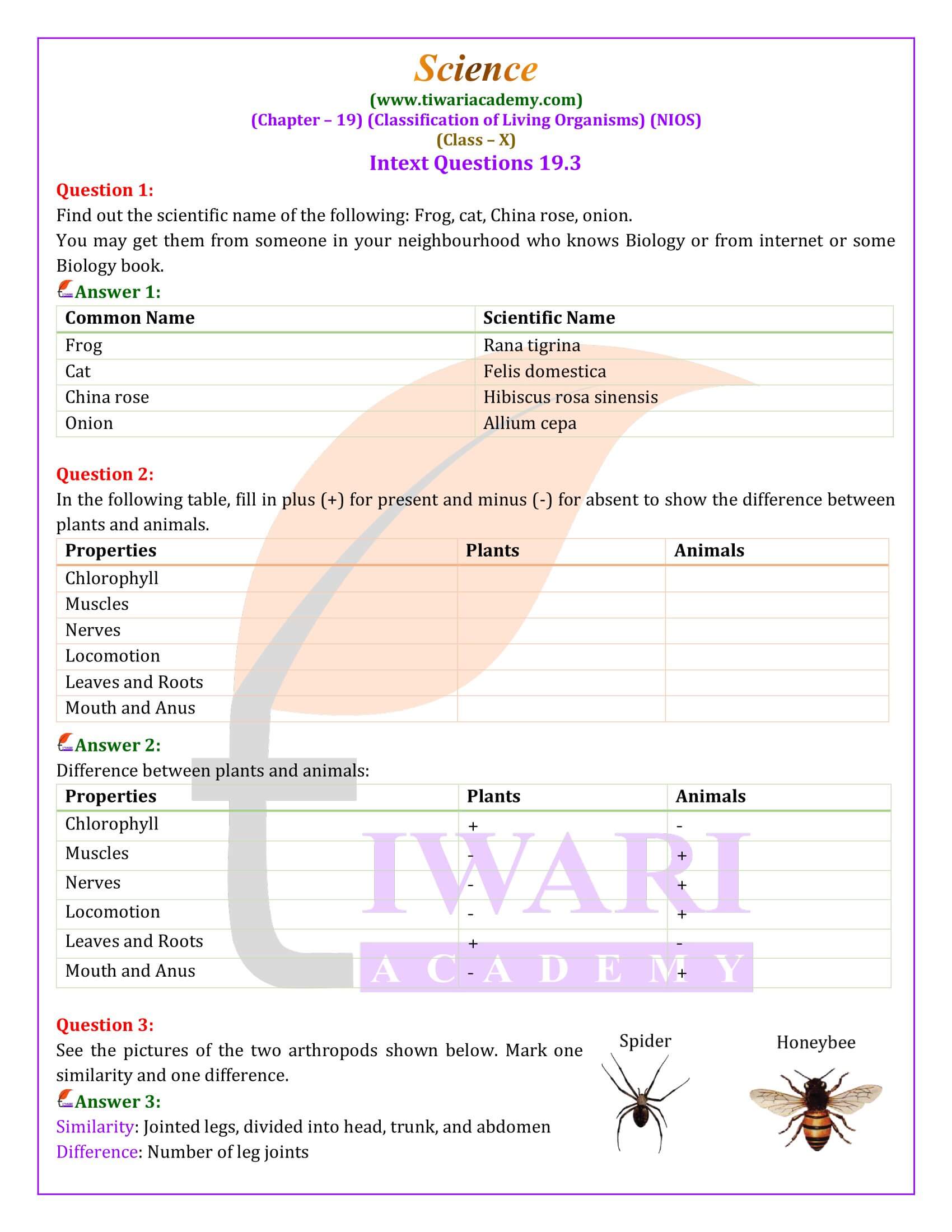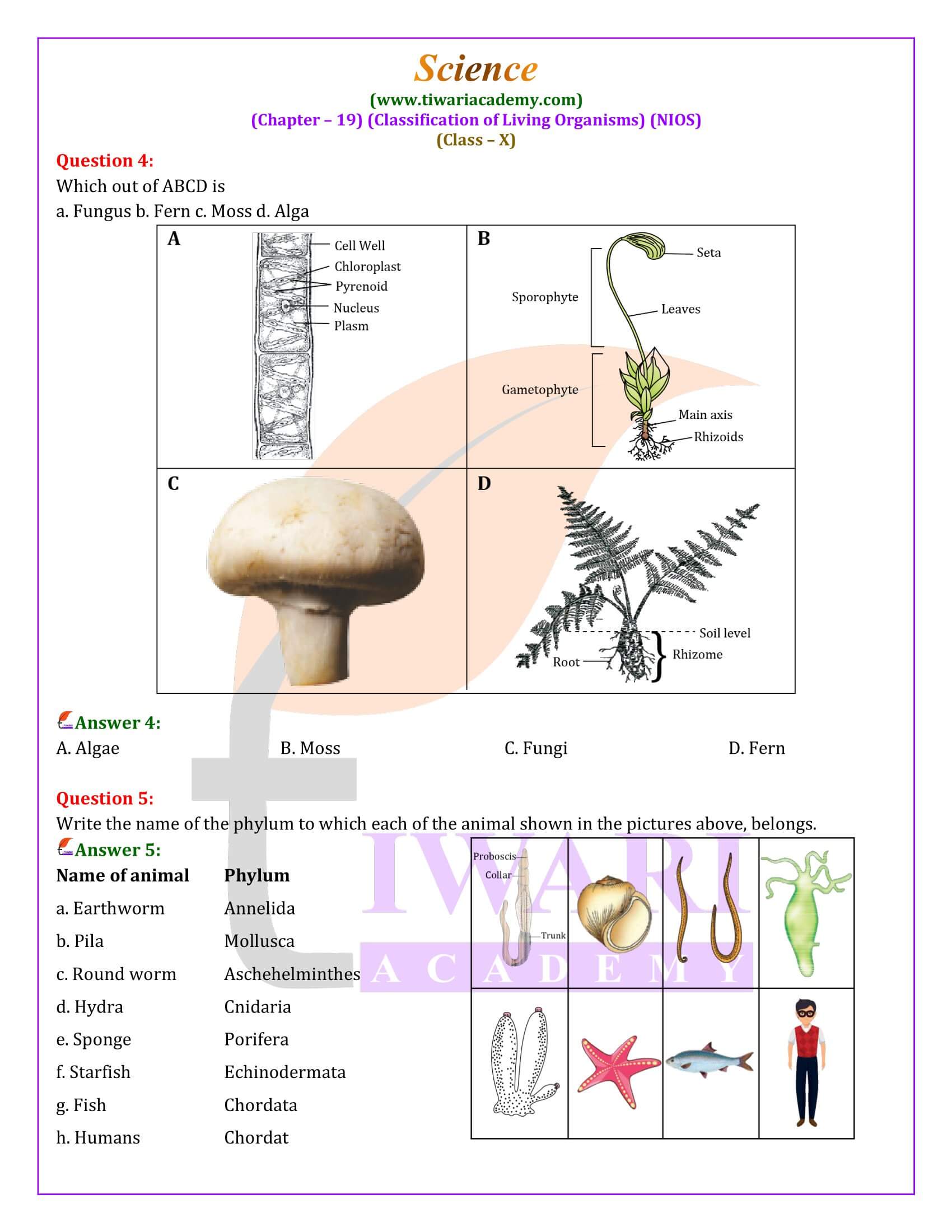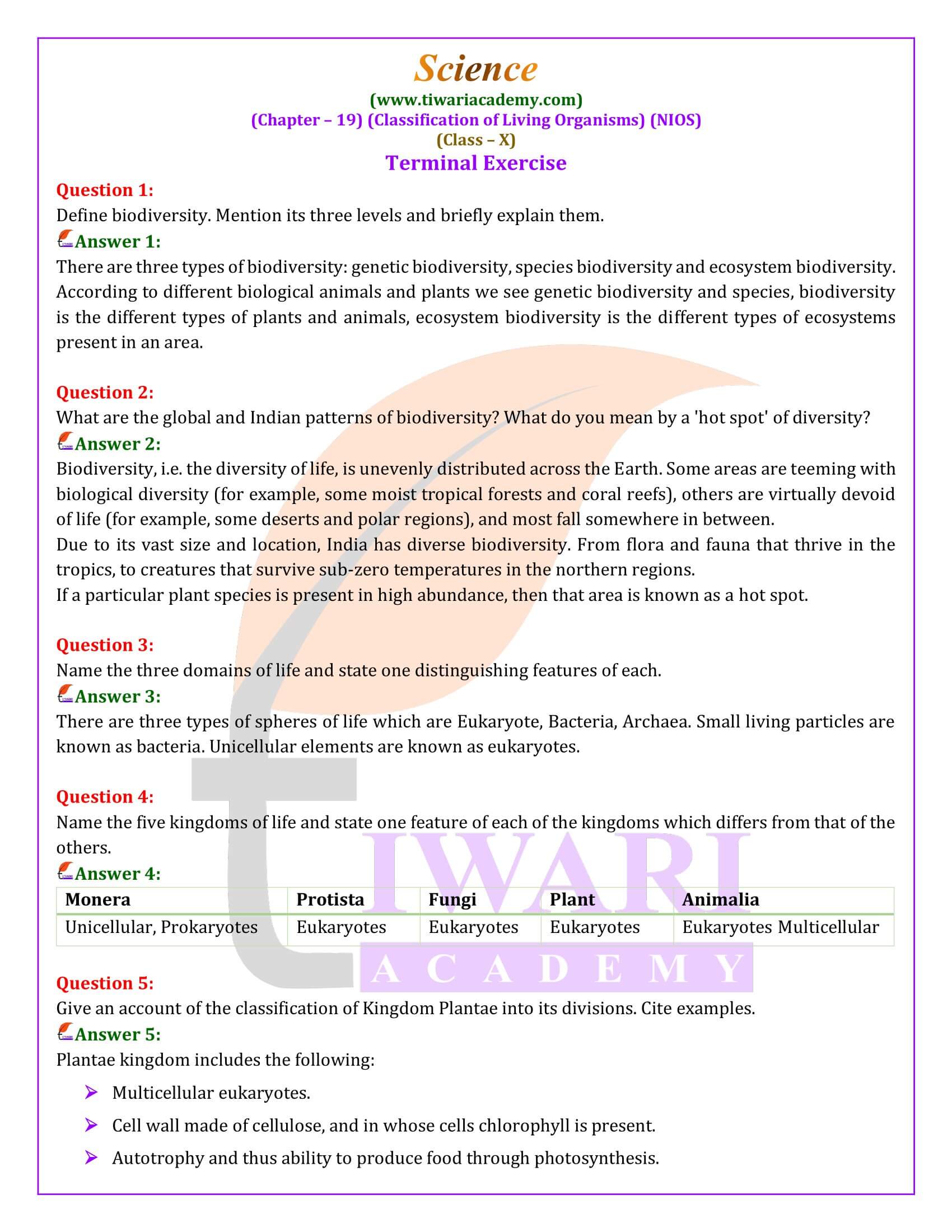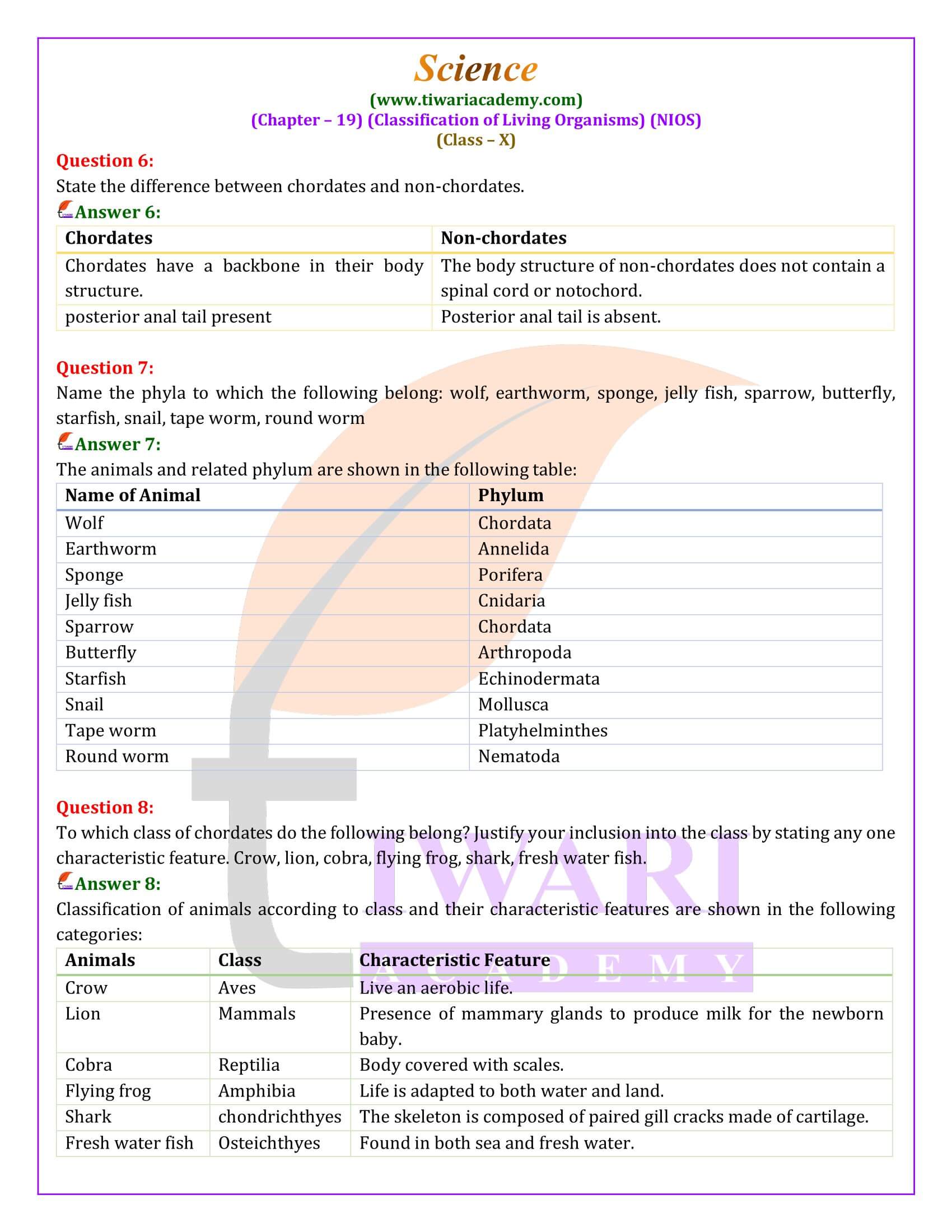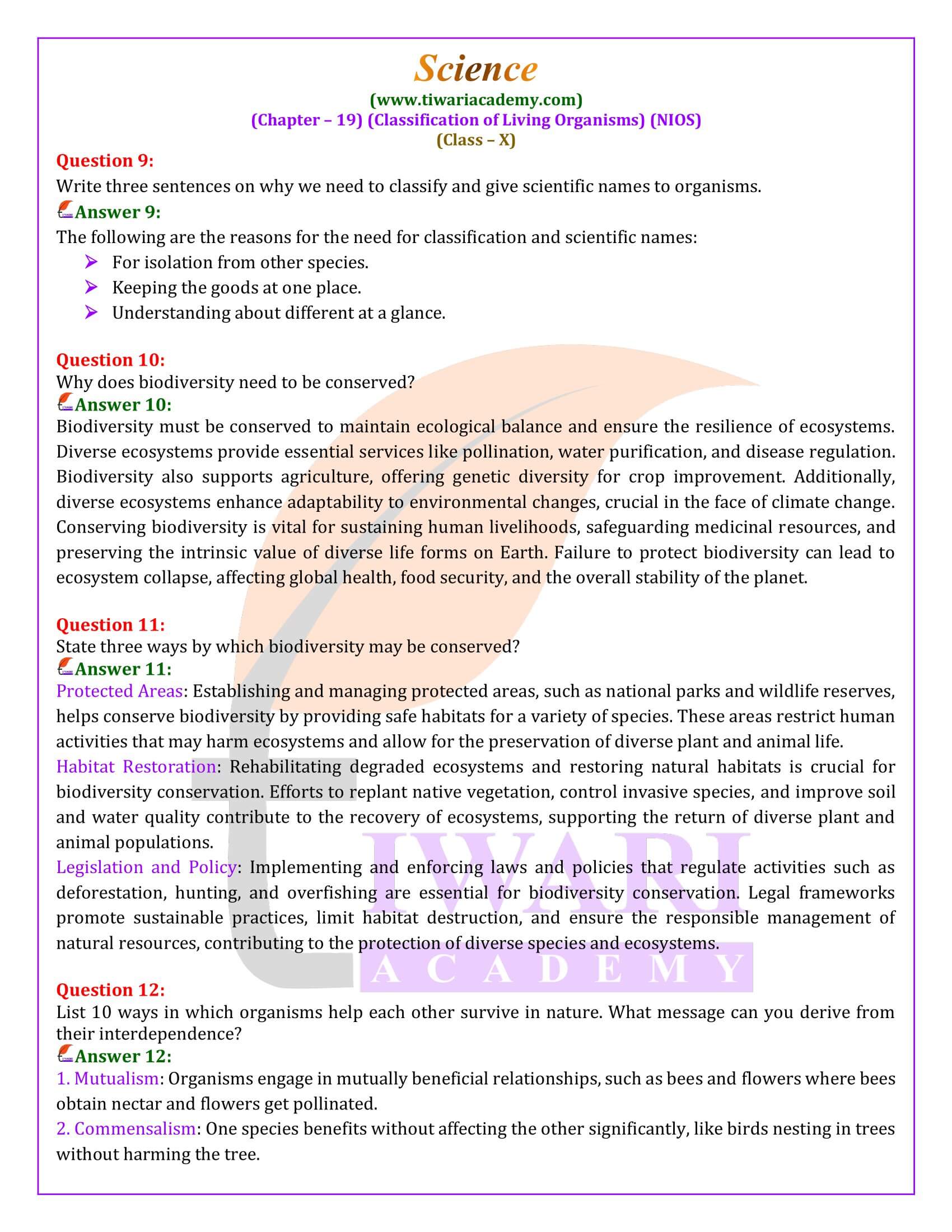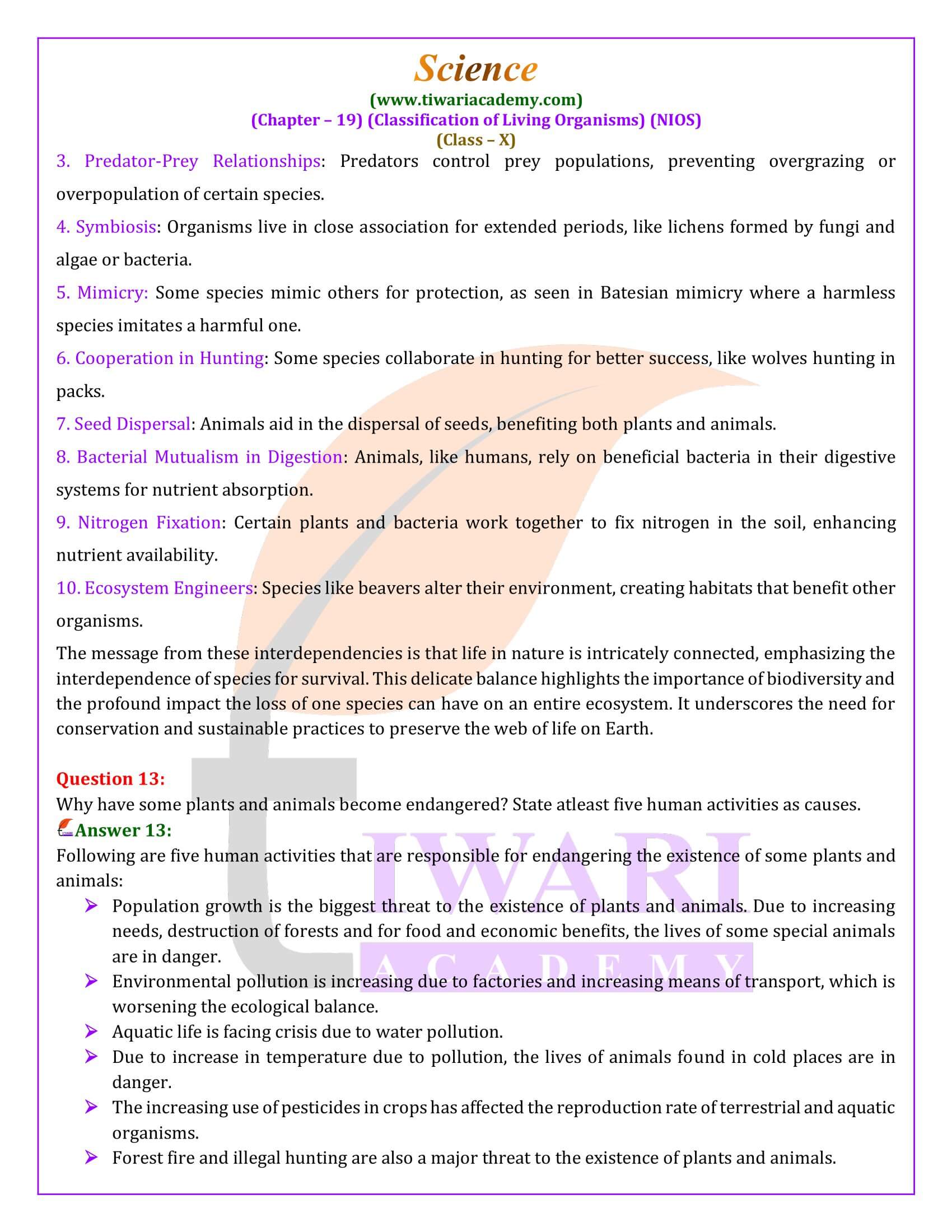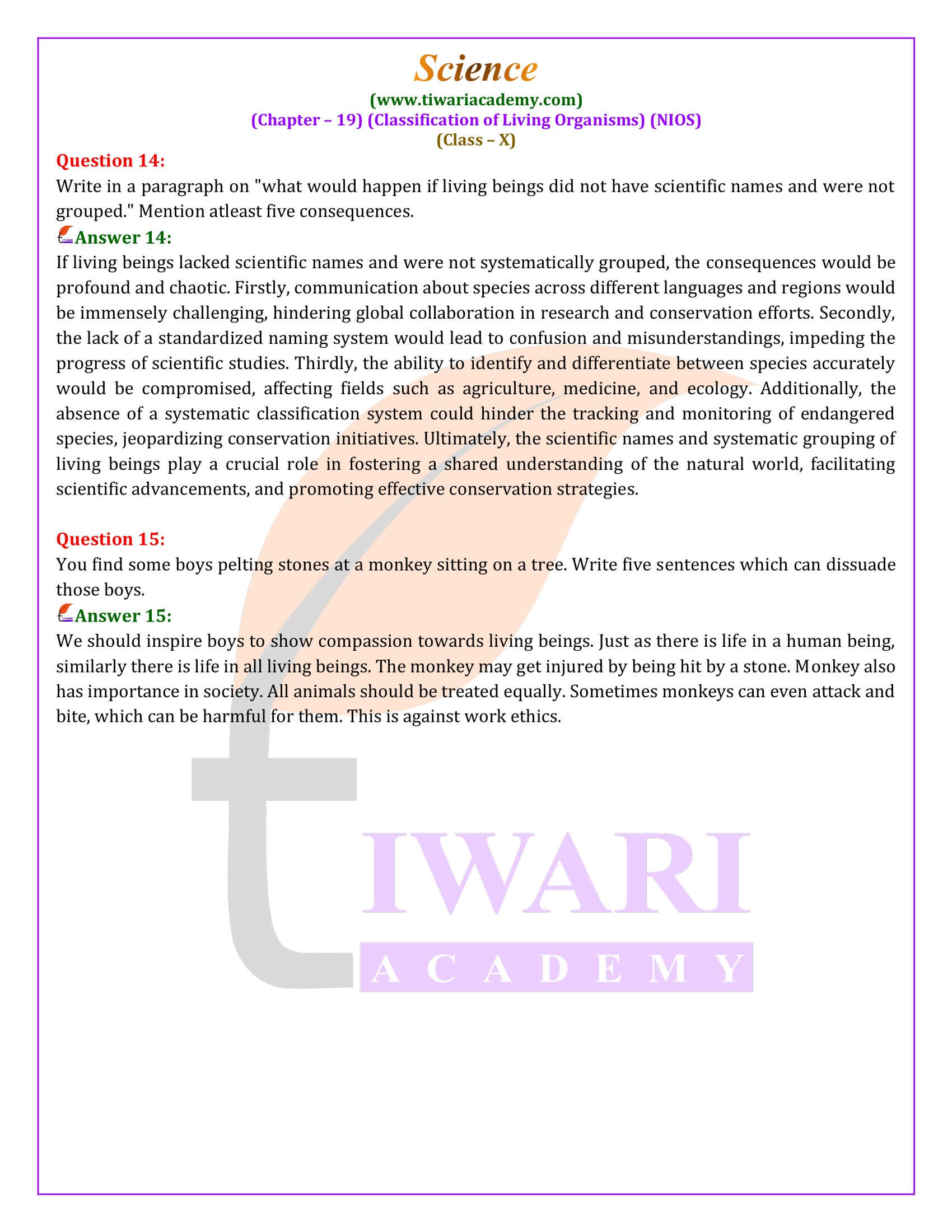NIOS Class 10 Science Chapter 19 Classification of Living Organisms in Hindi and English Medium modified and updated for academic session 2024-25. All the question answers of NIOS Class 10 Science chapter 19 are done here in step by step manner.
NIOS Class 10 Science Chapter 19 Classification of Living Organisms
Classification of Living Organisms
NIOS Class 10 Science Chapter 19 on the classification of living organisms offers a detailed exploration into the incredible diversity of life on Earth. It begins by recognizing Earth as the only planet in our solar system where life is known to exist, supported by a vast array of living organisms deriving their sustenance from non-living sources. This diversity, termed biodiversity, encompasses various forms, from microscopic single-celled organisms to the largest mammals like elephants and whales. NIOS 10th Science Chapter 19 emphasizes the importance of classifying this biodiversity to better study and understand the complexities and interrelationships among different life forms.
Biodiversity is crucial not only for its intrinsic ecological value but also for the benefits it provides to humans. NIOS Class 10 Science Chapter 19 introduces the concept of biodiversity at different levels: genetic, species, and ecosystem diversity. Each level represents a unique component of the natural world, contributing to the overall stability and resilience of ecosystems. The text highlights examples such as the adaptations of organisms to their environments and the evolutionary processes that have led to the rich tapestry of life we observe today.
Systematic Classification of Living Organisms
One of the main focuses of NIOS Class 10 Science Chapter 19 is the systematic classification of living organisms into kingdoms, phyla, and other taxonomic ranks. This classification helps in organizing species based on shared characteristics and evolutionary histories. The five-kingdom system, which includes Monera, Protista, Fungi, Plantae, and Animalia, is explained with details on the distinctive features of each kingdom. For instance, organisms in Monera are prokaryotic and unicellular, while those in Plantae are multicellular autotrophs.
The narrative further delves into the significance of binomial nomenclature—a system introduced by Carl Linnaeus that uses a two-part name for each species, enhancing clarity and uniformity in the identification and communication of species across different languages and regions. This naming system is crucial for scientific accuracy and international collaboration in biological sciences.
NIOS Class 10 Science Chapter 19 Main Points
NIOS Class 10 Science Chapter 19 describes the impact of human activities on biodiversity, including habitat destruction, pollution, and overexploitation of resources, which pose significant threats to many species. It stresses the urgent need for conservation efforts to protect and preserve biodiversity, not only for its ecological functions but also for its cultural, economic, and scientific value to humanity. Various conservation strategies, such as protected areas and wildlife reserves, are outlined as means to mitigate these impacts and sustain biodiversity.
Summary of Class 10 Science chapter 19
Class 10 Science chapter 19 provides a comprehensive overview of the classification and significance of biodiversity, encouraging a deeper appreciation and understanding of the living world. It calls for responsible actions to conserve this invaluable asset, ensuring its benefits are preserved for future generations. This holistic approach not only educates about the complexities of life on Earth but also instills a sense of responsibility towards sustaining the natural world in the face of growing environmental challenges.
